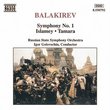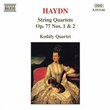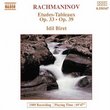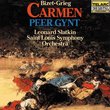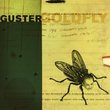| All Artists: Manuel de Falla, Isaac Albeniz, Kenneth Jean, Czecho-Slovak Radio Symphony Orchestra (Bratislava), CSR Symphony Orchestra (Bratislava) Title: Viva Esp�na!: The Music of Spain Members Wishing: 0 Total Copies: 0 Label: Naxos Release Date: 8/4/1992 Genres: Dance & Electronic, Special Interest, Classical Styles: Opera & Classical Vocal, Historical Periods, Modern, 20th, & 21st Century Number of Discs: 1 SwapaCD Credits: 1 UPCs: 730099517423, 4891030501744 |
Search - Manuel de Falla, Isaac Albeniz, Kenneth Jean :: Viva Esp�na!: The Music of Spain
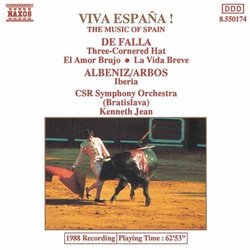 | Manuel de Falla, Isaac Albeniz, Kenneth Jean Viva Esp�na!: The Music of Spain Genres: Dance & Electronic, Special Interest, Classical
|
Larger Image |
CD DetailsSimilar CDs
Similarly Requested CDs
|
CD Reviews20th Century Spanish Art Music with Difficult Sound Leslie Richford | Selsingen, Lower Saxony | 12/12/2004 (3 out of 5 stars) "Two cautions here right from the start. One is that this is not ?typically Spanish? music of the kind that one normally associates with Spain, despite the title ?Viva Espana?. It is twentieth century Spanish art music. Of course, both de Falla and Albéniz were Spaniards and made use of some well-known Spanish themes and dances in their music. But neither of them was interested in reproducing Spanish folk music. De Falla was associated with men like Ravel and Stravinsky, and if you listen to his music you should expect to have to concentrate and not just be entertained by Moorish-sounding dances. In fact, most of the music on this disc sounds like the kind of stuff you would expect to hear at a World Championship Ice-Skating tournament, but not at a Spanish folk dance. If you are looking for the old-world Spanish type of music you should be looking up names like Jordi Savall and his ensemble Hespèrion XX (renamed Hespèrion XXI from 2000 onwards) or El Ayre Espanol.
My other caution is with regard to the sound. Some of the early Naxos discs are very sensitive to the equipment they are played on, and this one definitely belongs to that category. On most of the stereo equipment I have heard it on, this CD sounded singularly pale and unexciting. It was only by chance that I discovered it sounded a lot better on a combination I use occasionally (Sony CDP-XA20ES, NAD Amp C 300, connected by Monitor Rhodos cinch cable, and Philips SBC-HP1000 headphones). This equipment gave the whole disc a much more convincing stereo panorama, but even here the crescendos in Albéniz?s ?El Corpus [Christi] en Sevilla? with their bells and tambourines sounded pretty ?thick? and undifferentiated. That may be the result of the inferior acoustics at the recording location in Bratislava, Slovakia; or it may be that Naxos was just being rather thrifty at its recording sessions. But whatever the reason, you should know that this disc needs the right equipment to sound anything like what producer Martin Sauer wanted you to hear. Oh, one other curiosity. The lexicon of orchestral music that I use says that Albéniz?s ?Iberia? suite consists of only four movements of which the third is ?El Puerto?. This Naxos edition claims, however, that conductor Arbos orchestrated eight movements, and the third one played here is entitled ?Triana?. Spanish music buffs may be able to sort that one out. Having said all that, this is music that is worth knowing; some of it has been re-recorded by Naxos with newer and, presumably, better technology. " |

 Track Listings (13) - Disc #1
Track Listings (13) - Disc #1
